STREET PROJECT Conducted by Anne-Emmanuelle Lazar with five TARA girls
INTRODUCTION
This project follows the one that took place in 2014 with TARA boys. It consisted in six sessions of one to two hours each. For the girls involved in the project, it was the first experience of the kind. The aim of the project was to get to know about the girls’ vision of the street, taking into account that they might have been in their personal experience street children, or exposed to the violence of street life, or at least had been the victims of a traumatic background. It seemed therefore interesting and instructive to see how they reflected on their past, but also to what extend their experience of living at TARA in a safe environment could have changed their perception of the street. Obviously they were not asked direct questions about their past life. The only reference to it was to get to know if they had always known Delhi streets.
First session: a talk on “street”
Special thanks to Neha Purohit who helped for this session to translate some girls’ words from Hindi to English.
First the girls were asked to introduce themselves and to say if they had always been familiar with New Delhi. The information below is based on the girls’ words.
Roshni, 11 yo, born in Bhopal, Madhya Pradesh. Left the city at the age of 6. Goes back there every year.
Noorjahan, 12 yo, born in Delhi
Kamal, 12 yo, born in Amritsar, Punjab. Left the city at the age of 6.
Soni, 12 yo, born in Delhi
Dyana, 13 yo, born in Kabul, Afghanistan. Left the country at the age of 4. Doesn’t remember much of it.
1) What does the word “street” evoke to you?
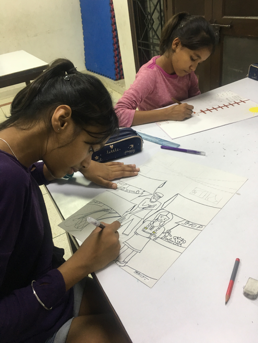
Roshni: “a road with loose stones, craziness, a dirty man pigging out paratha (flatbread)”
Noorjahan: “street lights, buildings, dirty cars and pollution”
Kamal: “garbage, black water in the sewers, narrow streets”
Soni: “walking, carrying bags or bottles, Chandni Chowk (an old and busy market in Delhi)”
Dyana: “roads with lots of cars, shops, noise and pollution”
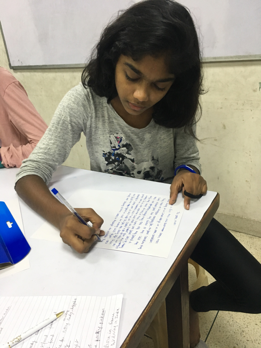
2) What about the smells of the street?
The streets smell on garbage, tobacco, flowers, perfume (if someone walks by), jalabi (fried sweet with sugar syrup), cakes and chow mein (Chinese noodles).
3) What about the light on the streets?
There are crackers on Diwali, Chinese lights on the walls, long and yellow street lights.
4) What about nature in the city?
There are big, large trees like banyans, pipls. We can also see some yellow flowers: amaltaz (Kamal was therefore renamed by the other girls “Kamaltaz”). There is more greenery than flowers. Flowers are often in pots. Kamal recalls a flower festival in Punjab.
5) What animals can you meet on the streets?
Dogs, cows, buffaloes, oxen, horses, monkeys, pigs.
6) What about the people on the streets?
There are people begging, wearing dirty clothes, carrying things on bicycles.
7) What picture of the streets would you like to take?
Roshni: “garbage”
Noorjahan: “people begging on the street”
Kamal: “I want to take a picture while I’m spraying perfume on a cow. Otherwise, trees.”
Soni: “flowers”
Dyana: “street food”
Second session: taking photos outdoor
We went to the nearest market- Malviya Nagar market. The girls were given a camera. Noorjahan, Soni and Dyana took the photos they intended to take. Roshni didn’t find much garbage. She took the photo of a bin. As it was expected, Kamal took photos of trees.
Third session: picturing oneself on the street
The girls were given A3 sheets of white paper, pencils and color pens.
Instruction: For this first picture, you’ll have to represent yourself on the street. The choice of the city is up to you.
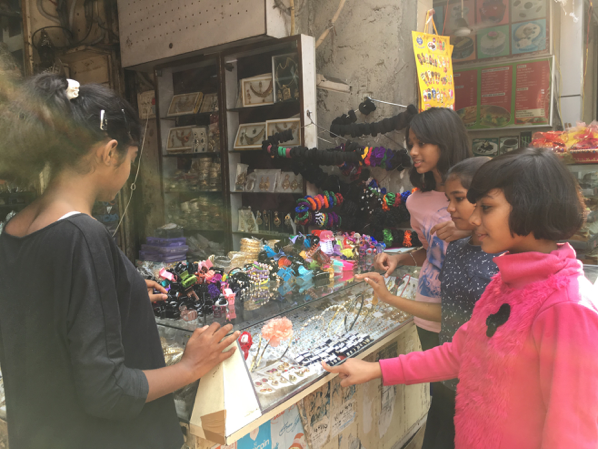
Roshni chose Bhopal.
Noorjahan chose “the road in any city”.
Kamal chose Amritsar.
Soni chose Delhi. Having drawn her picture, she admitted it was Agra, as she represented the Taj Mahal.
Dyana chose Chirag Delhi (an urban village in South Delhi).
Having finished their pictures, here is how they commented on them.
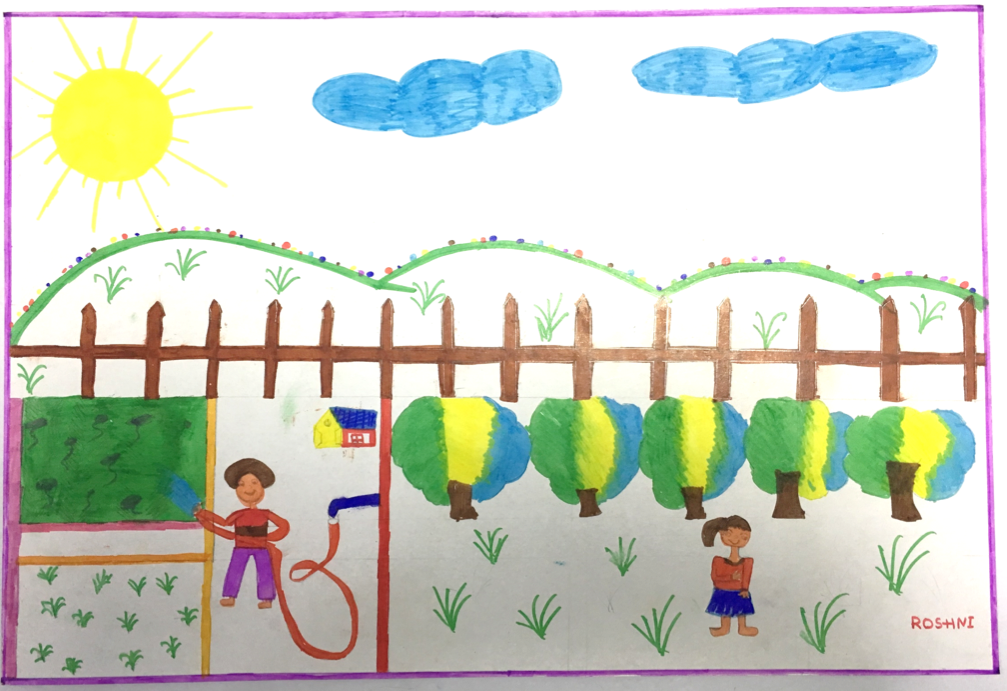
Roshni: “I’m standing in a big farm, there are huge trees and a lots of plants. It’s the place where I grew up. The man watering a plant is my uncle. There are green mountains in the background and a fence so that no one can come inside. This is the small house of my uncle. My house was behind the trees. It was a big house. The house of my other uncle was also there. We had a group of houses and there was a lot of greenery.”
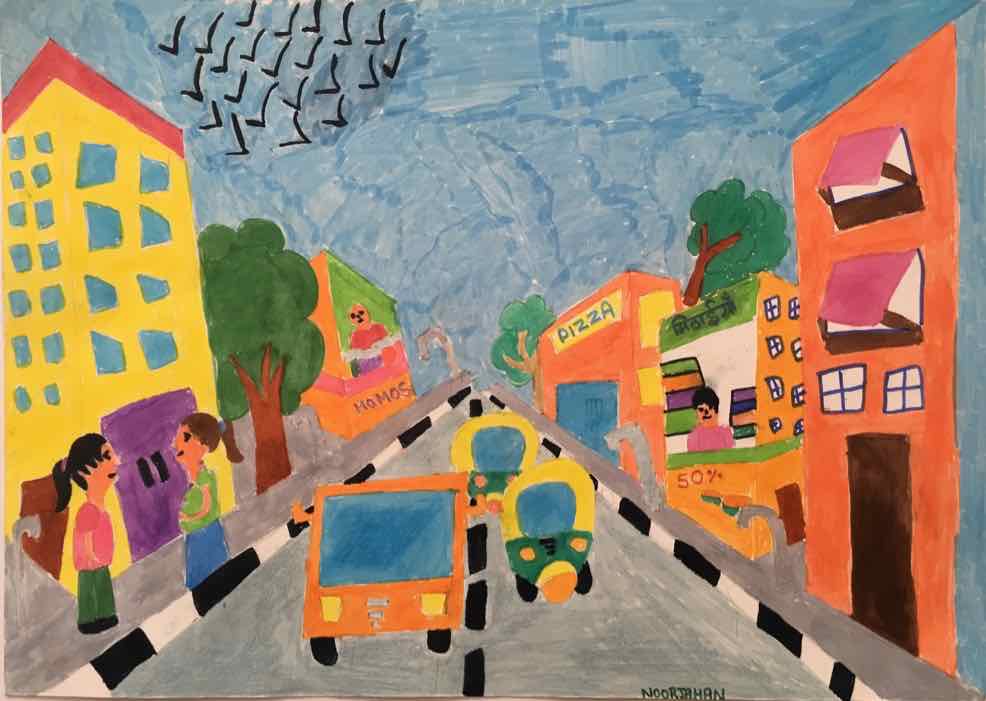
Noorjahan: “It is a typical road of Malviya Nagar. There are fastfood restaurants, momos (dumplings from Northeast India), mithai (sweets). I’m asking the pregnant lady: “Can I help you cross the road?” and she says “No, I can walk by myself”.”
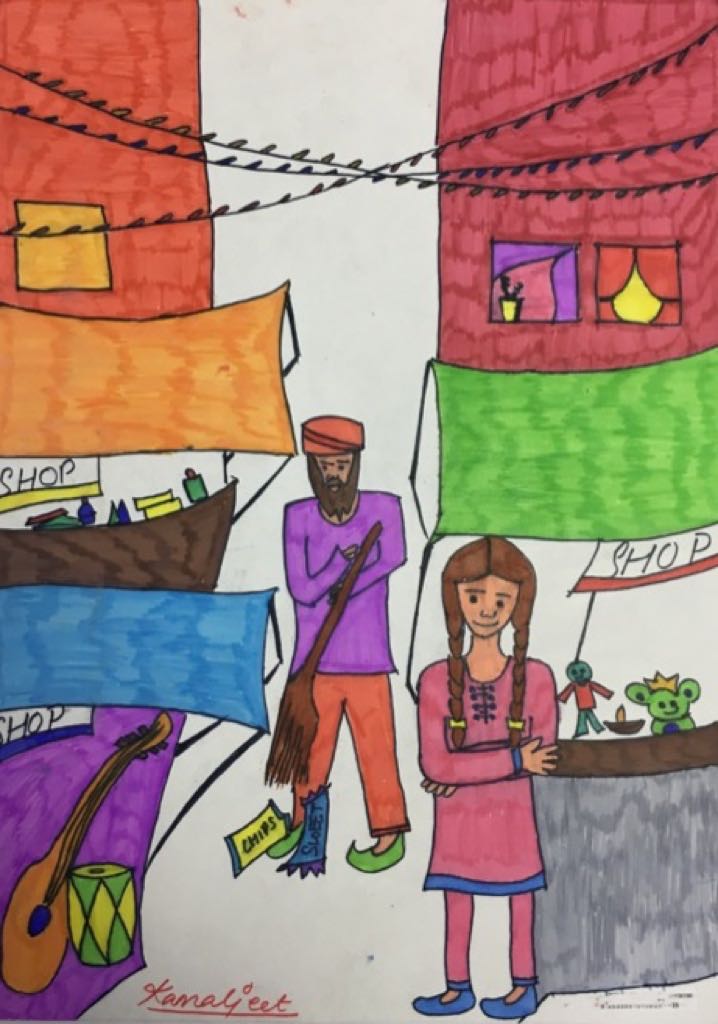
Kamal: “There are many shops and buildings, this has been decorated for Diwali. They are selling many things. This uncle is cleaning dust and I’m watching him cleaning. I had my hair that long when I was young. I just used to walk and look at the things over there. When I was young, I wanted heels, but I didn’t represent them on the picture. I would always go and look at the heels in the shops.”
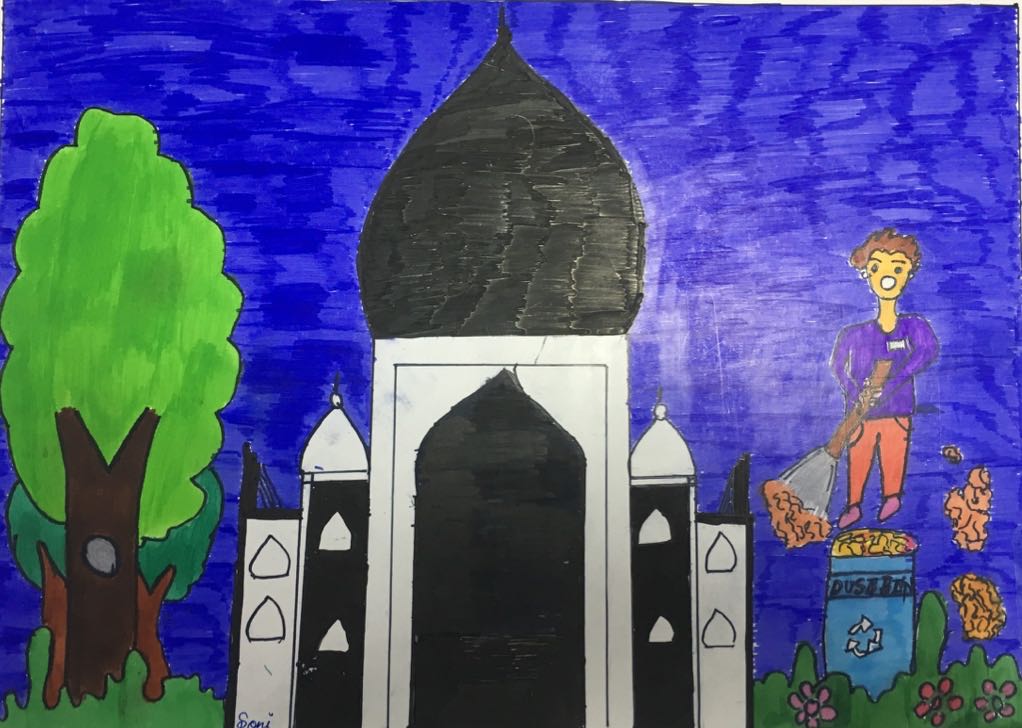
Soni: “When I was in Taj Mahal, I saw some garbage and I cleaned it. I went there when I was young. So many people were there, they clicked pictures, they ate and threw everything on the floor. I had to clean it.”
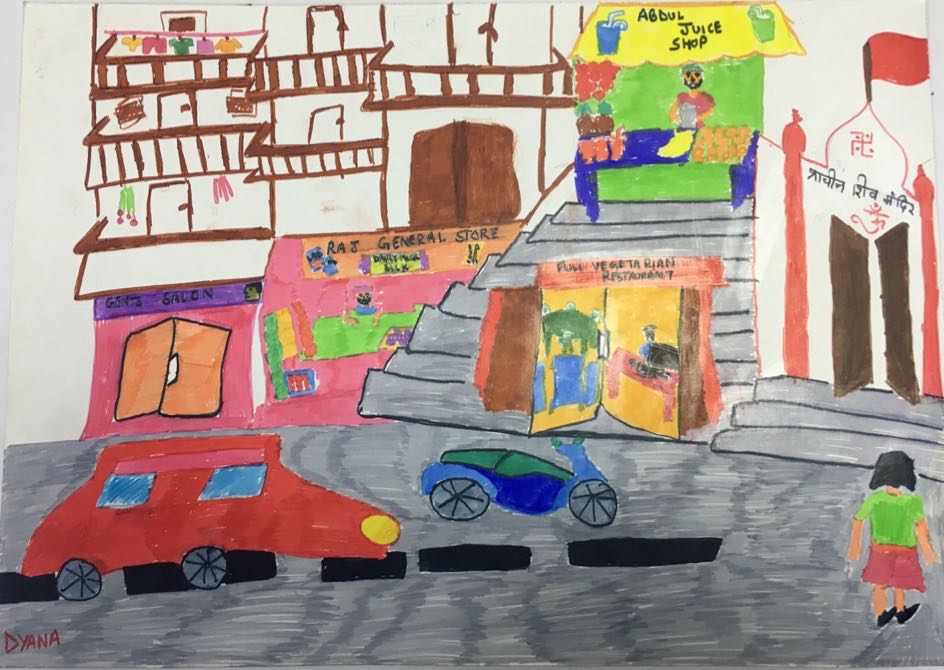
Dyana: “It’s a place in Delhi with shops, buildings. My school bus used to pass by this area. The real actual view of India is there. There are dirty sewers, garbage, so many people of many religions, mandirs (Hindu temples), gurdwaras (Sikh temples), restaurants. I’m entering the mandir.”
Fourth session: imaginary short stories
The girls were asked to give a name to their photos. Then each one of them made up a story based on one of the photo’s name. Soni and Roshni had to write their stories again, as their first version was just a description of our tour to the market.
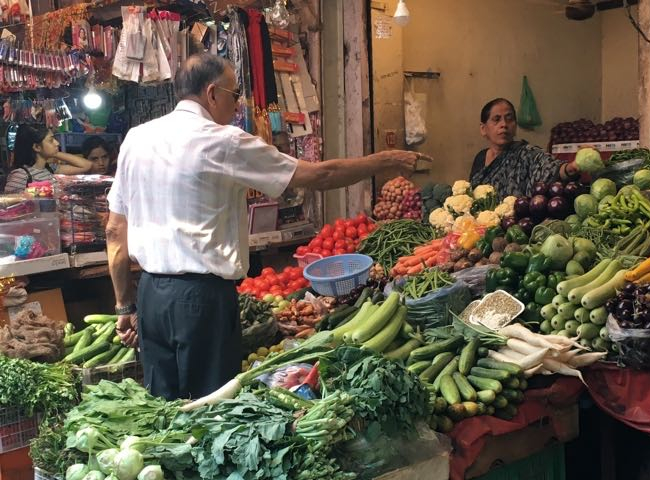
The cabbage man
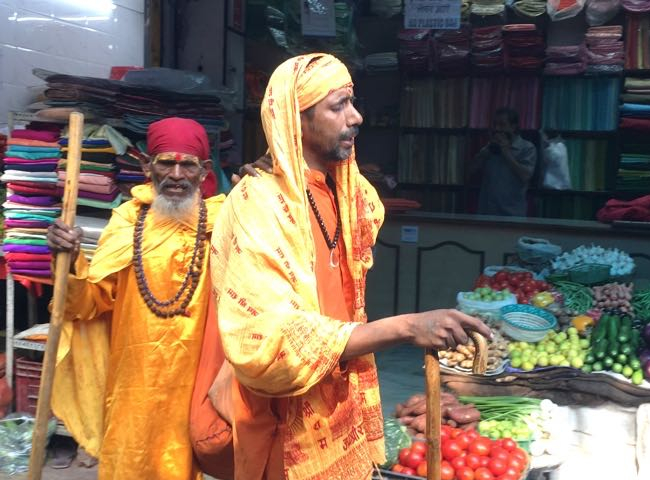
The yellow men
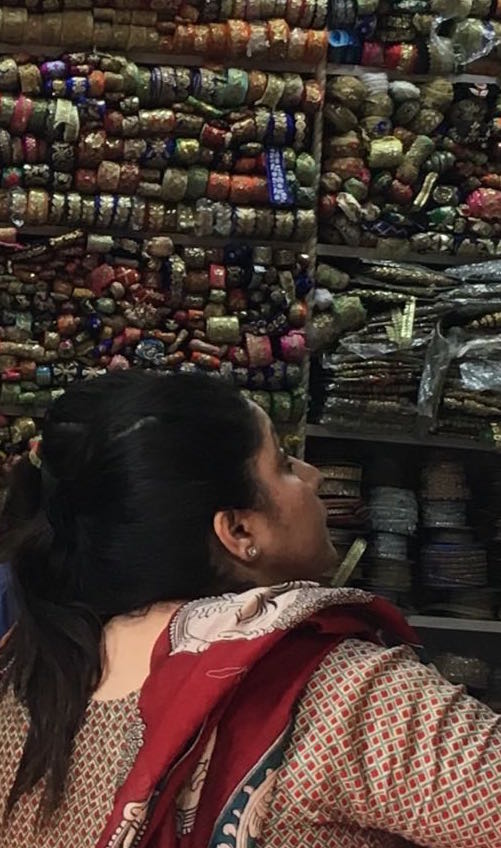
The fat fibers
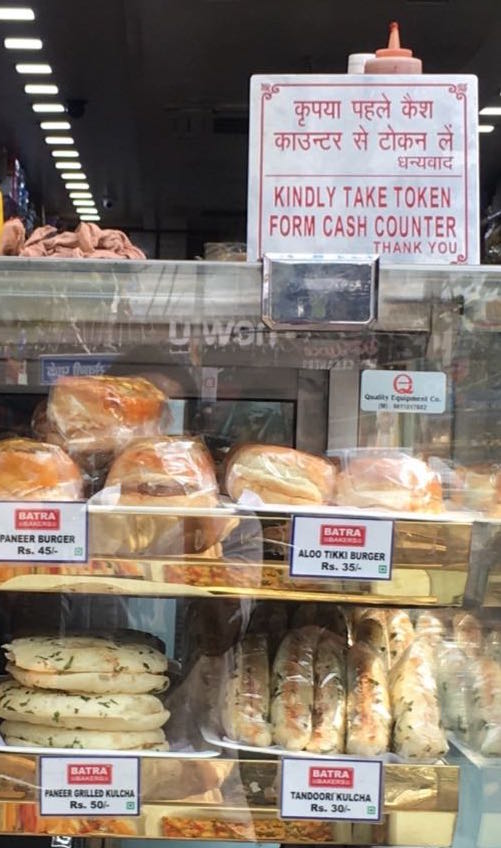
Vampire's food

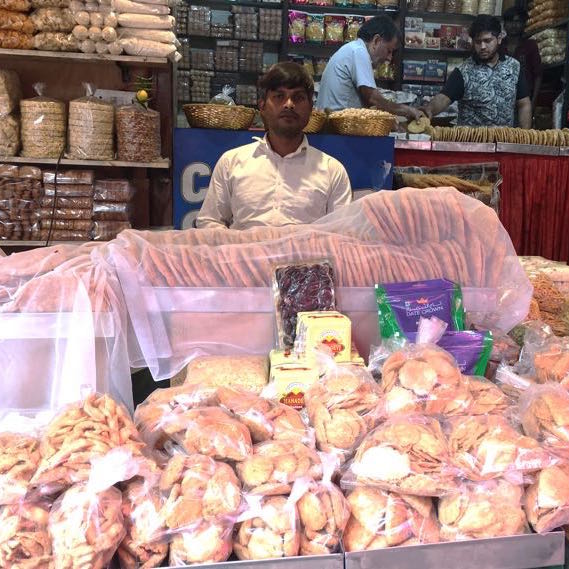
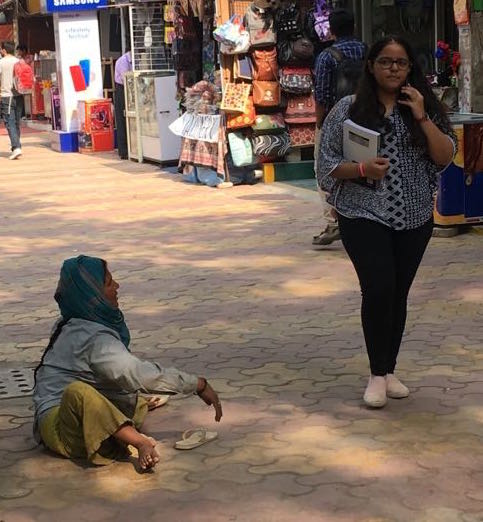
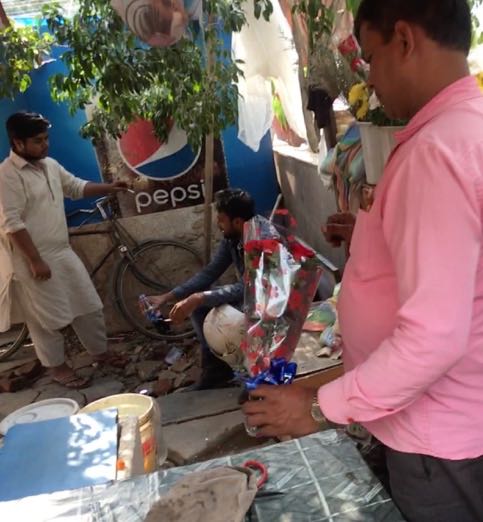

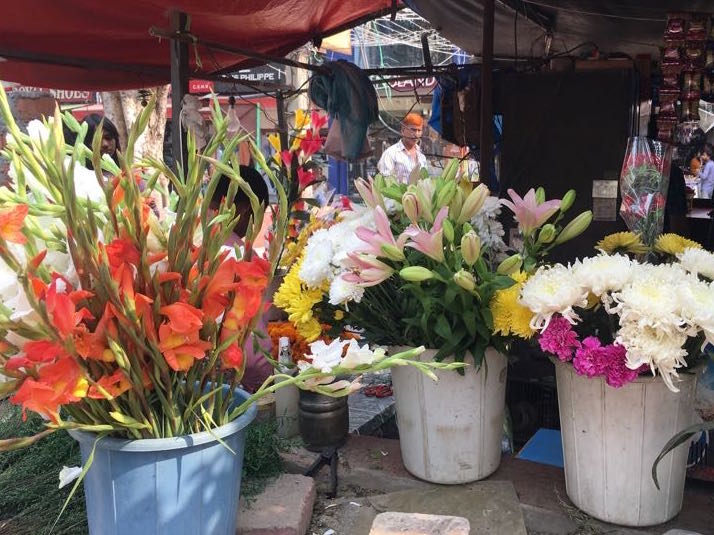

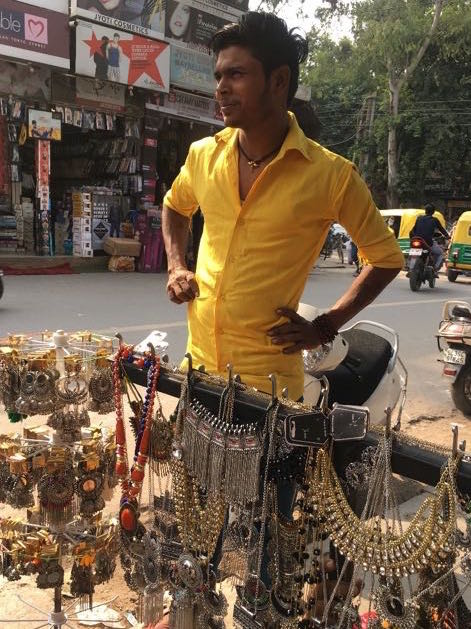
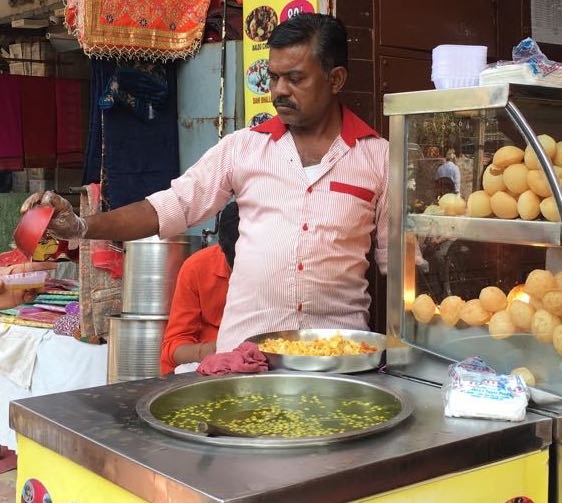
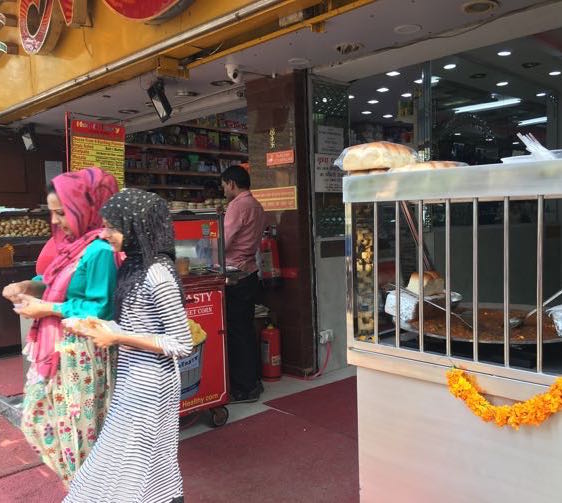
The ugly witch
A story by Roshni
Once upon a time there was an ugly witch in my life. She always came in my dreams and tried to get me in trouble. Once my dream became true. When I was coming back from school, she met me on the road, kidnapped me and called my mother to ask her for money. She threatened her: “If you complain to the police, your child will be killed!”. My mother said: “I need some time to get the money. “. I tried to run away and once I succeeded in that, but behind me a car was following me and killed me. When my mother got to know I was dead, she committed suicide from a balcony. Then my mother and I went to heaven, where we lived happily.
The greedy man
A story by Noorjahan
Once upon a time there were two poor men who were living in a small village. They had to struggle every day to get some food. Sometimes they slept without eating. They decided to beg. Still they were not getting enough money. Once they found a bag, they took it home; there was a lot of money in it. One of them said that they should give the money back to the police, but the other said: “No, we are already so poor that it will help us in our daily life.”. The first man agreed. A thief was listening to them through the window. He decided to take all their money. When the poor men were asleep, the thief entered their house and stole their money. In the morning, the poor men saw that no money was left. The thief had gone to the market to buy some clothes. He went to a shop where the shopkeeper told him: “Do you think I’m a fool?”. “Why that, what happened?”, the thief asked. The shopkeeper replied: “It’s not real money!”. The thief was shocked and very sad.
Born in France but living in India
A story by Kamal
Once upon a time I was young. I went to a market where I saw many beautiful things, but there was something strange ˗all the animals were talking and buying food and clothes for themselves. For a moment I was shocked, then I thought it would be great to talk to animals, so I went to a dog and asked him what his name was. “Jack”, he said, so I asked him many questions about his life experience. “First I was in France, living happily, but one day a boy took me in a flight to India. There is no one here who can help me about it, but still there is more freedom here than in France, because here I get food on time and everybody cares about me.”. I felt sad about the dog, but I was happy too, because he was living a good life. When I finished the talk, I looked back and saw my mom who scolded me badly because I was late for school. I woke up and thought:” What a nice dream it was!” and I went happily to my school.
The light of the world
A story by Soni
Once upon a time there was an old queen, her name was Valerina. She was very rich in her city. She went to the jungle and brought back to her castle some bright lights from there. She ate these lights and so there was light in her body. Her body became so bright that she died. Everybody was happy in the village because she was a bad queen, so they called that day a bright day.
The waving aunty
A story by Dyana
Listen to this tale very carefully, because it is so interesting… Once upon a time there was a very busy city. Everyone was so busy with his work, with his life, that no one had time for each other, but this aunty was so special that everyone chose to give her a bit of his time and his money. She was in the middle of the market, dancing in a torn dress and her face was not cleaned properly. Her dance was entertaining and funny and in the end she used to wave her hand to the people, asking for money as she was a beggar. I could not get her out of my mind. So the next day I went back to see her again and this time I gave her a 10-rupee coin. When I got close to her, I realized she was actually a bit old. That surprised me a lot and also made me think of a moral: ANYBODY CAN DANCE.
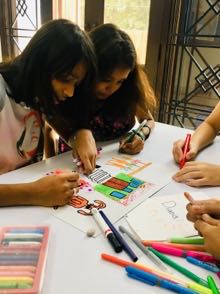
Fifth session: common story and picture
The girls were asked to make up a global short story out of the five ones they had individually invented. One after the other, they had to add to the narrative a sentence featuring the character that was originally present in their own story. Then they all together made a picture illustrating that common story.
Witch lights
A story by Roshni, Noorjahan, Kamal, Soni and Dyana
Once upon a time there was a dog shopping in a market. He went to a shop where a greedy woman was selling hot dogs. From outside the shop looked like heaven with a lot of Diwali lights and dancing flowers. In the front there was a big board with a beautiful lady eating a hot dog. When the shopkeeper (she was a witch) saw the dog, the greed came to her mind and she planned to make a hot dog out of him. She started waving the lights and dancing and she asked the dog to step inside. When the dog entered the shop, he saw lots of dogs hanging on the wall and he became shocked and scared. Then the witch came to him and tried to catch him, but he said: “I don’t taste good because I’m a French dog!”. So the witch said: “It’s okay, I’ll make French dog fries out of you! I’ll put lots of flowers and Diwali lights on you, so that you become nice, shiny and tasty and I’ll sell you on the market!”.
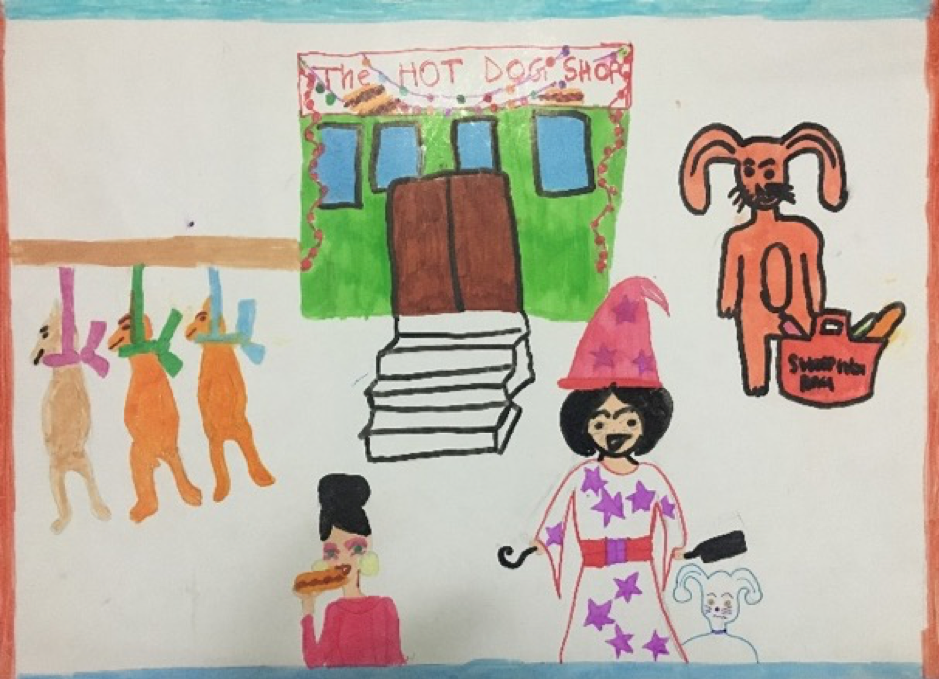
Sixth session: acting and feedback
For our last session, the girls were asked to play their story and a video was made out of it.
Then they gave their feedback on the street project.
Roshni: my own street is green
“It was wonderful, we had a lot of fun because we wrote imaginary stories and we played theater. The street I talked about in the first session was not clean, the road was not properly fixed. On the picture, I made my own street clean with a lot of greenery.”
Noorjahan: a drawing for a wish
“The street project was great. When I heard the word “street”, I thought of pollution, poor people on the road, lots of cars, auto-rickshaws and bikes. But when I drew the street, I put clean roads and not too many people. I want the streets to be like in my drawing.”
Kamal: let’s make our streets clean!
“It was great, I had a lot of fun and I learned how to make stories. When we discussed about the street, the thing that came to my mind was that it was dirty, but when I drew my picture, I put a man cleaning because I thought it was important to show we can make the street look better.”
Soni: a dream of trees and flowers
“It was wonderful, I loved to do these activities, drawing pictures. I’ve learned lots of things. When I heard the word “street”, I thought of dirty people with old shoes. When I made my drawing, I wanted to show that people can change their mind and make their city beautiful with lots of trees and flowers.”
Dyana: the hidden beauty of the street
”When I heard the word “street”, it sounded to me like people running here and there, like they were busy and not caring about anybody around. In my picture I drew something very calm, no one was pushing the others. I enjoyed going out to the market. I had never seen the street that way before. There is a beauty in the street. When I clicked the photos, I realized that.”
CONCLUSION
There is a gap between what the girls said about the streets on the first session, that was mostly negative (smelly, dirty, overcrowded streets) and what they represented in their first pictures. What strikes is the use of bright colors and the peaceful atmosphere that clashes with the way the girls had themselves described the streets. The exception here is Soni, who pictured an ominous black Taj Mahal and depicted herself as a street cleaner. But even though she added some joyful details like green trees, flowers and a bright blue sky.
Whereas the instruction was to illustrate the street, two girls made a different choice. Roshni drew a place in her native village that looks more like a big field than a street. As for Soni, she found it hard to define precisely where her picture took place ˗ first she said Delhi, then Agra, but wherever it is, it is not a street in the strict sense of the word. What seems more important here is the childhood memory (seemingly alleged in Soni’s case) they wanted to focus on.
When the girls commented on their pictures, they mostly pointed up the dirtiness and hassle of the real street in comparison to their intention to show a clean, green and restful street. This positive vision might be interpreted as a way to heighten their own experience of the street and even, for the ones who chose a scene of the past (Roshni, Soni) ˗ to magnify their own childhood. Another interesting point is that Dyana shows her back, when all the others have chosen side view or, like in most children’s pictures, front view (providing Kamal’s picture with a theatrical twist, given that she is supposed to look at the street cleaner). This detail is a bit unsettling when we know that Dyana had to hide her face for a couple of years, due to her personal situation.
The titles that the girls gave to their photos show their sense of humor (e.g. “The fat fibres” coveted by a plump lady), as well as their capacity to transmute a trivial scenery into a dreamland (“The world of light”).
Even so, their common story shows that their fancy is not deprived of cruelty. The vision of hanged dogs in the shop is quite terrifying and there is no happy ending: the yelping hero shall be killed and sold. But again, the addition of comic details (a dog wrapped in garlands of light and covered with dancing flowers) seems to show that TARA girls are now in capacity to find keys to overcome the traumas of their inner world.
Posted on 15 November 2018